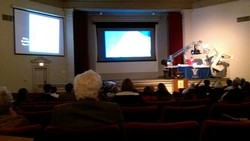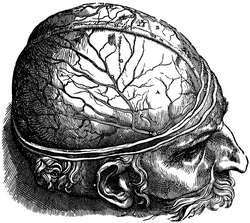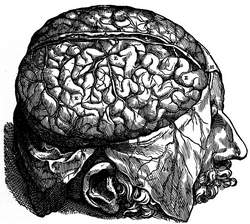The terms “anatomy” and “dissection” are synonymous. In the days of Andreas Vesalius, the dissection of a corpse was a public event, where medical students would attend, as well as the paying public.
This event would go on for days as the dissector would explain the anatomy racing against time, as there were no means of body preservation.
Through the centuries after the public anatomies of the 1500’s, the dissection of donated bodies has been continued in the anatomy departments of medical schools helping medical students and surgeons prepare for the challenges of the practice of medicine and surgery.
A public anatomy was one of the events of the interdisciplinary symposium "Vesalius and the Invention of the Modern Body" hosted by the St. Louis University and the Washington University February 26-28, 2015. To my knowledge, a public anatomy has not been done in centuries (I may be wrong).
Some of the objectives were to demonstrate that Andrea Vesalius' description of the anatomy of the brain, its ventricular system, and the cranial nerves was logical, followed a process, and that the Fabrica, in its seventh book can be used as a dissector. The presentation was entitled “A Fabrica-guided Neo-Vesalian Public Dissection of the Brain Ventricular System 500 Years Later at St. Louis University” by Dr. Salomon Segal.
The dissection used excerpts and images from the Fabrica, as well as an advanced HD 3D camera, showing the brain and its structures with amazing clarity. The accompanying photo of the event is not well focused because of the light conditions, but shows the setup for the presentation.
This was an extremely professional presentation and although not completely “public” per se, the variety of attendees had a great feedback on the event. Proper attention to the care and respect towards the specimens and the anonymity of the donors was maintained at all times. I consider myself honored to have been a witness and a participant to this extraordinary event. Dr. Miranda.






